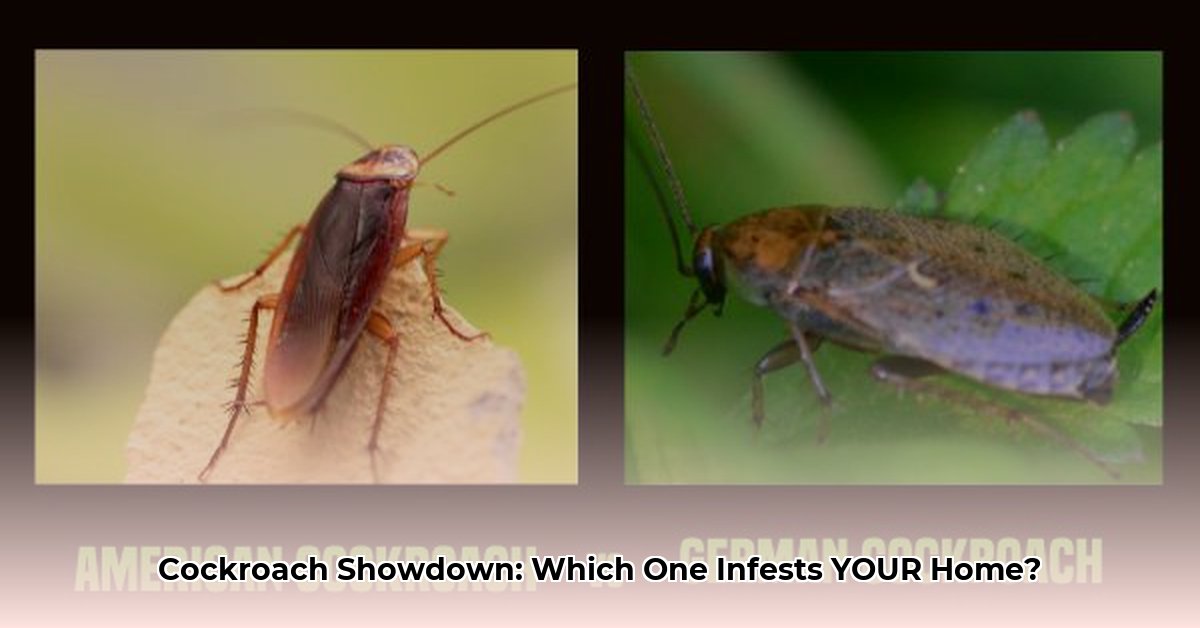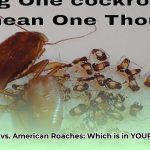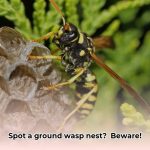This guide equips you with the knowledge to identify, understand, and eliminate the two most common cockroach invaders: the American and the German cockroach. We’ll cover their key differences, habitats, health risks, and, most importantly, how to get rid of them—and keep them out.
Roach Recognition: Spotting the Culprit
Knowing your enemy is the first step to victory. Here’s a quick guide to differentiate these unwelcome guests:
| Feature | American Cockroach | German Cockroach |
|---|---|---|
| Size | Large (1.5–2+ inches) | Small (½–⅝ inch) |
| Color | Reddish-brown with pale yellow “halo” | Tan to light brown with two dark stripes |
| Wings | Can fly (but rarely does indoors) | Has wings, but doesn’t fly |
| Distinctive Markings | Pronotum “halo” | Two dark stripes on the pronotum |
American Cockroach: The Outsider
Appearance
These reddish-brown roaches are large, measuring about 1.5 to 2 inches or longer. The distinctive pale yellow marking behind their head resembles a figure-eight or halo.
Habitat & Behavior
American cockroaches prefer damp, dark places like sewers, basements, and crawl spaces. They might wander indoors seeking food or shelter, especially after heavy rain. They are more likely to be found outdoors in warmer climates, hiding under rocks or in woodpiles. Indoors, they prefer lower levels and damp areas around pipes and drains.
Life Cycle & Reproduction
American cockroaches reproduce relatively slowly compared to their German counterparts. Their egg cases (oothecae) are dark brown and about ⅓ of an inch long.
Health Risks
While less of an indoor threat than German cockroaches, they can still introduce bacteria and allergens into your home, potentially contaminating food and surfaces.
Control
Effective control methods include bait traps, insecticides, and perimeter sprays around your home’s foundation. Maintaining good sanitation and sealing entry points are crucial preventative measures.
German Cockroach: The Indoor Invader
Appearance
Smaller than the American cockroach, German cockroaches are light brown or tan with two distinct dark parallel stripes running down their backs. They measure about ½ inch long.
Habitat & Behavior
German cockroaches thrive in warm, humid indoor environments, particularly kitchens and bathrooms. They seek out food and water sources, hiding in cracks and crevices near appliances and plumbing. They are extremely sensitive to cold and rarely found outdoors.
Life Cycle & Reproduction
German cockroaches reproduce rapidly, making infestations difficult to control. Their light brown egg cases contain numerous nymphs, allowing populations to explode quickly.
Health Risks
Because they infest areas where food is prepared and stored, German cockroaches pose significant health risks. They can spread bacteria like Salmonella and trigger allergic reactions and asthma attacks.
Control
Similar control methods to American cockroaches apply—baits, insecticides, and perimeter sprays. However, due to their rapid reproduction, multiple treatments and meticulous sanitation are often necessary. Professional pest control services are frequently recommended for established infestations.
Head-to-Head: American vs. German Cockroaches
| Feature | American Cockroach | German Cockroach |
|---|---|---|
| Size | 1.5-2+ inches | ½–⅝ inches |
| Color | Reddish-brown, yellowish figure-eight | Tan to light brown with two dark stripes |
| Wings | Can fly (but rarely does so indoors) | Has wings, but doesn’t fly |
| Habitat | Damp, dark areas (basements, drains) | Kitchens, bathrooms, near food & water |
| Reproduction | Slower | Rapid |
| Control | Baits, insecticides, perimeter sprays, good sanitation | Baits, insecticides, perimeter sprays, excellent sanitation, frequent treatments |
Prevention: Winning the War Before It Starts
The best offense is a good defense. These proactive steps can significantly reduce your risk of a cockroach infestation:
- Seal the Gaps: Caulk or seal cracks and crevices, especially around pipes and baseboards.
- Secure Food: Store food in airtight containers and clean up spills promptly.
- Maintain Cleanliness: Regularly clean kitchens and bathrooms, paying attention to areas under sinks and appliances.
- Eliminate Moisture: Fix leaky faucets and pipes.
- Manage Trash: Empty trash cans regularly and keep them clean.
Ongoing Research and Evolving Knowledge
While much is known about cockroach behavior and control, research is ongoing. Some experts suggest that climate change may influence cockroach distribution, potentially expanding the range of certain species. The study of cockroach behavior and adaptation continues to evolve, offering new insights into their preferred environments and effective control strategies. If you have a persistent or severe infestation, consulting a professional pest control service is always recommended. They can provide expert identification, tailored solutions, and the latest information on best practices.
- Grass Forever in Livermore: Your Guide to Artificial Turf - April 22, 2025
- German Roaches vs. American Roaches: Key Differences and Control - April 22, 2025
- 150+ Flowers That Start With S: A Comprehensive Guide - April 22, 2025










